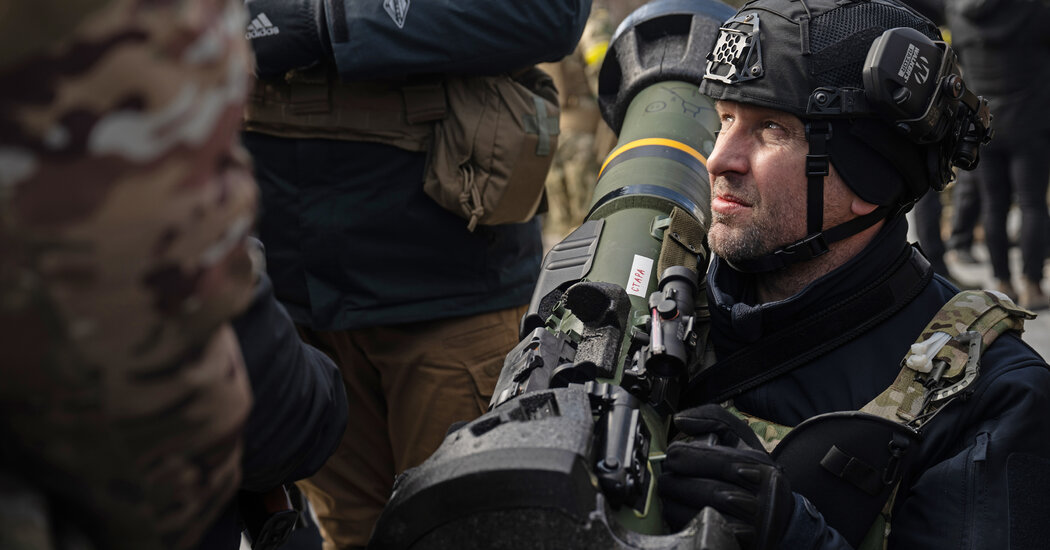
Both weapons can be fired directly at targets like enemy soldiers or a building, but when attacking vehicles they can also be programmed to hit from above — where a tank or armored personnel carrier has the least armor. The American weapon can pop up and then dive down to impact and explode, while the British missile flies a shorter path — crossing over its target and firing its charge downward.
The result, however, as shown in Ukraine is the same: an uncounted number of destroyed Russian tanks, armored personnel carriers and trucks.
The missiles have succeeded despite efforts to defeat them. The Russian military had said, and Pentagon leadership believed, that a defensive system on the newest T-90 tanks was capable of sensing and destroying anti-tank missiles like Javelins and NLAWs in flight. In an apparently new countermeasure, Russian troops are welding improvised cages of parallel steel bars atop tank turrets. Video evidence shows that both defenses, however, have failed.
Russia-Ukraine War: Key Developments
The Javelin, which was designed toward the end of the Cold War, consists of two parts: a 15-pound reusable launcher that soldiers often use for reconnaissance and surveillance, given its suite of thermal cameras that can zoom in and out for finding targets, and a 33-pound disposable tube that contains the missile itself. The newer NLAW, by comparison, weighs just under 28 pounds and has no camera — just a simple sight to aim.
And while the Javelin can kill tanks from as far away as two and a half miles, its missile flies slower than the NLAW, which is most accurate for targets up to only about a half mile away. For moving targets, the Javelin can guide itself while in flight, thanks to a heat-seeker in the missile’s nose, whereas a soldier firing an NLAW simply points the weapon at a moving vehicle, engages the guidance system and tracks the target for a few seconds before firing. The missile then flies to a point where it predicts the target will be.
The capabilities of the two weapons make the Javelin more like a sniper rifle for taking out armored vehicles at extreme distances, the British diplomat said, while the NLAW is better for close-quarter battles and ambush scenarios.




